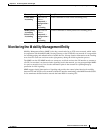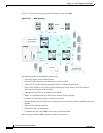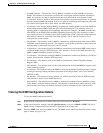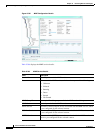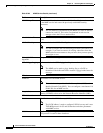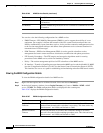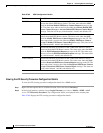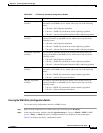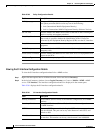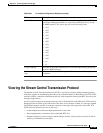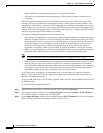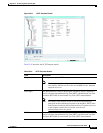
25-150
Cisco Prime Network 4.0 User Guide
OL-29343-01
Chapter 25 Monitoring Mobile Technologies
Monitoring the Mobility Management Entity
You can also view the following configurations for a MME service:
• EMM Timeouts—EPS Mobility Management (EMM) is used to support the mobility of a user
equipment. For example, it informs the network of the UEs current location and provides user
identity confidentiality. Apart from these services, it also provides connection management services
to the session management sublayer and defines timer parameters such as timeout durations for
retransmission of NAS messages.
• ESM Timeouts—EPS Session Management (ESM) is used to provide subscriber session
management for bearer context activation, deactivation, modification and update procedures.
• LTE Security Procedures—The LTE integrity and encryption algorithms used for security
procedures for the MME service, which are enabled by default.
• Policy—The session management policies for LTE subscribers of the MME service.
• S1 Interface—Transfer of signalling messages between the MME service and the eNodeB. S1 MME
uses the S1 Application Protocol (S1-AP) over the Steam Control Transmission Protocol (SCTP).
This interface also serves as a path for establishing and maintaining subscriber EPS bearer context.
Viewing the EMM Configuration Details
To view the EMM configuration details for a MME service:
Step 1 Right-click the required device in Prime Network Vision and choose Inventory.
Step 2 In the logical inventory window, choose Logical Inventory > Context > Mobile > MME > MME
service > EMM. The EMM configuration details are displayed in the content pane.
Table 25-87 displays the EMM configuration details.
S16 Interface Indicates whether the peer SGSN service is allowed to communicate over the
S16 Interface.
S3 Interface Indicates whether the peer SGSN service is allowed to communicate over the
S3 Interface.
Table 25-86 MME Service Details (continued)
Field Description
Table 25-87 EMM Configuration Details
Field Description
Implicit Detach
Timeouts
The timeout duration (in seconds) after which the subscriber will be
detached from the network in case there is no activity. This time can be any
value between 1 and 12000, and defaults to 5640.
Mobile Reachable
Timeout
The timeout duration (in seconds) after which the attempt to reach the
network is discarded and the reattempt procedure starts. This time can be any
value between 1 and 12000, and defaults to 5640.




